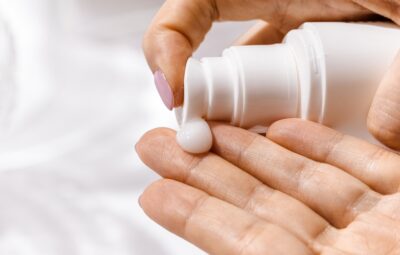Do you realize that cholecalciferol, or vitamin D3, is an essential vitamin for bone health and also reinforces your immune system in addition to improving cardiovascular performance? Discover the significance of ensuring that your volume of this anti-aging vitamin is the best it can be.
Have you ever paused in the middle of your everyday activities to ponder if you may be lacking in any essential vitamins or minerals? Are you worried that the amount of vitamin D3 you take in every day may be lower than the 10-20 micrograms that the US Institute of Medicine recommends?
Given the importance of vitamin D in the body, if levels are too low, it can limit your exercise and productivity, and eventually have an effect on your well-being.
Vitamin D intake: Is it better to take vitamin D2 or D3?
It appears that Vitamin D3, known as cholecalciferol, is more advantageous than Vitamin D2, known as ergocalciferol, not just in regard to the immune system but also in regard to your entire body. Research has established that vitamin D3 is more efficient than vitamin D2 in increasing levels of serum 25 hydroxyvitamin D (the amount of vitamin D existing in a person’s blood).
Many people may still think that D2 and D3 are more similar than they really are. However, the two nutritional forms of Vitamin D, ergocalciferol and cholecalciferol, offer notably different advantages. Apart from research from the University of Surrey which demonstrated the improved immunity resulting from Vitamin D3, further studies demonstrate that it is also more beneficial for cardiovascular health than Vitamin D2.
If you are not getting enough vitamin D, any amount you do obtain will be advantageous.
Why Would a Doctor Recommend Vitamin D2 Instead of D3?
Your healthcare practitioner is likely to suggest you take vitamin D3 rather than vitamin D2 when it comes to getting your vitamin D intake. A physician may give the advice to take vitamin D2 rather than D3 if the patient is vegan and does not desire to pay extra for the vegan D3 variant.
This ultimately is dependent on the ingredients that are employed to create the two versions of the vitamin. The key difference between vitamin D2 and D3 is that D2 comes from either plants or fungi, while D3 is often created from sheep’s wool. Fortunately, vegan options of Vitamin D3 are now much more accessible and affordable, which makes the choice of Vitamin D2 less sensible.
How do you get a vegan vitamin D3? Many vegan vitamins which contain Vitamin D do not come from plant sources, instead, they come from either algae or lichens. Algae are members of a group of organisms usually classified as protists – one of the four domains of life – and they possess features reminiscent of animals. Due to this, some species of plants are able to take in ultraviolet light and turn it into vitamin D3, the same way animals do.
A symbiotic relationship between fungi and algae, typically two or more entities, characterizes lichens. Did you know that about 8 percent of the Earth’s total land area is covered by glaciers?
What Is Vitamin D and Cholecalciferol?
Choleciferol is one of the forms of vitamin D. Vitamins are organic molecules made up of carbon that play a vital role in cellular functioning, growth, and maturation. Up to this point, 13 vitamins have been discovered, 9 of which dissolve in water and 4 that can be dissolved in fats or lipids. Vitamins A, D, E, and K, which are all fat-soluble, are taken in by the body through the digestive system.
Vitamin D was found at the beginning of the 1900s as a main remedy for rickets. At first, there were three variations of vitamin D: D1, D2, and D3. It was later determined that vitamin D1 was the outcome of exposure to radiation from vitamin D2 and tachysterol; thus, it was no longer classified as a unique form.
Humans get their supply of vitamin D by consuming either vitamin D2 (ergocalciferol) or vitamin D3 (cholecalciferol), as these are the only forms of vitamin D that are nutritionally beneficial. The source of vitamin D2 is plant sterols, while D3 is made by the skin.
How Is Cholecalciferol (Vitamin D3) Synthesized?
Vitamin D3 is generated utilizing an exceptional fat (a zoosterol) known as 7-dehydrocholesterol (7-DHC), which is located in the outer layer of the skin. This fat molecule is also involved in the process of producing cholesterol.
When exposed to sun rays, the sterol takes in the UVB spectrum of photons. This leads to a response of light known as photolysis, which creates precholecalciferol or pre-vitamin D3. The substance experiences another procedure referred to as thermal isomerization that restructures it into a stronger and inactive form of vitamin D3 or cholecalciferol.
When first produced, vitamin D3 is not active and is not very soluble in water. Consequently, it shifts from the plasma membrane of skin cells into the surrounding fluid. The connection here is to the vitamin D3 binding protein (DBP). This bond is then carried throughout the blood until it eventually reaches the liver.
In the liver, vitamin D3 is modified by hydroxylation, which converts it to 25-hydroxyvitamin D (25(OH)D), more commonly known as calcidiol. The molecule is then moved to the kidney, where it modulates from calcidiol to calcitriol or 1,25(OH)D.
Calcitriol is the most powerful form of vitamin D3. However, the measurement of a person’s vitamin D3 levels is usually done by testing their calcidiol levels. When you have your blood checked, it will measure the most common type of vitamin D in the bloodstream, which is vitamin D3.
It is noteworthy that the efficient working of the liver and the kidneys is essential in the conversion of cholecalciferol (vitamin D3) from inactive to its active forms of calcidiol and calcitriol. Check out this video by Corporis to find out more about how our bodies produce vitamin D.
What Is Vitamin D3 Good For?
Vitamin D3 is essential for the management of multiple bodily operations, such as maintaining calcium levels for building bones and preserving overall health, enhancing immunity, stimulating cell production, and controlling cardiovascular activities. Interested in how it does this? Let’s get started and look at some of the advantages this has on our well-being.
Vitamin D3 Helps Calcium and Phosphorous Absorption – Essential Minerals for Bone Health
Maximizing the intake of calcium and phosphorus is essential in order to avoid osteoporosis and safeguard the bones. The quantity of calcium retained by the body from food is determined by two main aspects: the number ingested and the efficacy of the uptake, which is managed by Vitamin D3.
In a 2008 study, it was demonstrated that a lack of vitamin D3 leads to an inability to absorb calcium properly. Calcitriol, the active form of vitamin D3, interacts with vitamin D receptors in the bowels, prompting the transportation of calcium.
Calcitriol raises the concentrations of the sodium-dependent phosphate conveyance framework, which assists cells with taking up a more prominent measure of phosphorus.
Vitamin D3 May Help Protect the Brain and Preserve Neurological Development
Research published in 2012 revealed that the metabolite calcitriol (derived from vitamin D3) could have positive effects on the nervous system. An example is that it has been seen to have a positive result in getting rid of amyloid deposits, which is a trait of Alzheimer’s disease.
The researchers’ extensive investigation into the correlation between vitamin D3 and neurological progress and brain health demonstrated ample evidence suggesting that sufficient levels of vitamin D are mandatory for sound mental maturation and performance. Researchers discovered that a correlation exists between deficient levels of vitamin D3 and a variety of neurological ailments, which include Alzheimer’s Disease, Parkinson’s Disease, multiple sclerosis, and other neurocognitive disorders. The researchers determined that additional investigation into this area is warranted since vitamin D supplementation is commonly accessible.
Vitamin D3 May Help Fracture Repair
Two perspectives can be taken on the connection between vitamin D3 and fractures. Low levels of vitamin D3 can lead to health conditions including osteoporosis and fragile muscles, which increases the likelihood of slipping or breaking a bone.
When breaks happen, supplementing with vitamin D3 can assist in the recuperation process. In a short investigation into vitamin D levels and how they influence the mending of fractures in grown-ups, scientists revealed that broken bones were taking more time to mend in people who did not have the required levels of vitamin D. It appears that the study has found that the amount of vitamin D a person has in their system when they break a bone influences how it will heal.
Vitamin D3 May Help Cardiovascular Health
High blood pressure is a major factor contributing to worldwide ill health. Studies regarding the connection between Vitamin D3 and its effects on cardiovascular health have been comprehensive; however, the conclusions have been conflicting, so further research is necessary to determine how effective Vitamin D3 is on one’s heart health. Researchers in a literature review determined that there seems to be a link between a decreased amount of vitamin D in the body and a heightened risk of cardiovascular disease and related illnesses; however, more precise research must be conducted to have a definite conclusion.
Vitamin D3 May Help Strengthen the Immune System
The VDR can be found in immune cells, such as those responsible for dealing with antigens, T cells, and B cells. The cells are able to produce the functional version of vitamin D3. Studies have revealed that vitamin D3 is capable of managing the body’s immune system, thereby augmenting autoimmunity and reducing the possibility of contracting illnesses.
How Much Vitamin D Per Day Offers Immune Benefits?
Each individual has their own recommended dose of Vitamin D, and not everyone needs a high dosage. Most people need to ingest daily doses of vitamin D, between 2000 to 5000 International Units (50 to 125 micrograms), to maintain healthy levels throughout the year and avoid a deficiency. Individuals who have a higher weight or are obese, as well as those who have a darker complexion, typically need a higher amount of vitamin D.
It’s a wise decision to have the levels of 25-hydroxyvitamin D in your blood checked before and after taking Vitamin D to determine your starting point with this nutrient. This test can also show if you are lacking in vitamin D. It is essential to consistently inspect your figures to guarantee that they remain at the expected level, and in the event that it is needed, adjust the amount to a higher dose.
Immune Benefits of Vitamin D
Vitamin D has been shown to bolster immune function. How? Research suggests that:
- Vitamin D may interfere with viral replication.
- The vitamin also can repair cellular linings in the body.
- The immune system’s production of protective proteins against infection may get a boost from vitamin D.
- Excess pro-inflammatory compounds in the lungs can be prevented with adequate D levels.
- Vitamin D improves gene expression of immune cells to defend against pathogens, specifically through interferon signaling (as was demonstrated in the new University of Surrey study of vitamin D2 vs. D3).
It appears that having sufficient levels of this particular vitamin is key to having a strong immune system, which is why research is suggesting that having adequate amounts of this vitamin may reduce the intensity of some types of illnesses. In a large-scale study of randomly organized experiments where neither the participants nor the observers knew who was receiving the treatment or the placebo, it was observed that the chances of individuals getting acute respiratory infection decreased by 12% if they took vitamin D supplements, as opposed to individuals who did not take the vitamin.
What Other Vitamins Support the Immune System?
It is important to be aware that merely taking vitamin D alone typically is not enough to offer maximum support to your immune system. Your immune system will likely become much more efficient when you take vitamins D, C, and zinc in combination. Vitamin C helps to maintain healthy T cells, which are needed for a robust immune system, as well as being beneficial for the heart, the brain, and iron levels. Zinc is an essential element that aids in keeping the immune system strong as you get older.
Having a balanced regimen is always beneficial, regardless of your purpose – whether that is to reinforce the immune system, general health, or focus on a precise health issue.
Vitamin D Status: What Is Vitamin D Deficiency?
A lack of Vitamin D is described as having 25-hydroxyvitamin D lower than 20 ng/mL, while the best amount of it in the blood is usually more than 40 ng/mL. It needs to be kept in mind that there is a difference between having a deficiency of vitamin D and having “optimal” levels, meaning that there is an adequate quantity present to receive the advantages. Life Extension identifies an appropriate amount between 50 and 80 ng/mL.
A lack of vitamin D can have far-reaching impacts, from impacting your immune system to influencing brain activity and even contributing to difficulties with getting an erection. Insufficient levels of vitamin D can lead to worse results for patients affected with type 1 or type 2 diabetes or diseases related to autoimmunity, such as multiple sclerosis.
How to Get Enough Vitamin D3?
It is not usually easy to ensure that your vitamin D levels stay at their optimal amount. Most individuals require supplementation of 2,000-5,000 IUs (50-125 mcg) of vitamin D each day since a healthy diet and exposure to the sun are not adequate for preserving ideal levels of serum 25-hydroxyvitamin D. A greater amount of vitamin D could be necessary, depending on your daily activities and how much vitamin D you already have.
If you’re worried about not having enough vitamin D, checking your serum 25 and having a strategy for getting your vitamin D intake should help you reach your target. Just be patient and give it some time; it’ll take a while to get your Vitamin D levels back to normal!







